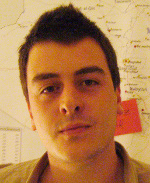In depth
Resisting violence, disturbing peace

Luca Gervasoni
«I'll tell you something: I'm not a pacifist. I don't want to negotiate agreements that legitimise our defeat. I'm fighting for justice»That's what Abdallah Abu Rahma told me in Palestine, in early 20071. Abdallah was (and still is) one of the leaders in the Palestinian nonviolent resistance movement against the Israeli occupation. Since then, he has been arrested seven times and injured on thirty-four occasions (on one of them, a high-speed projectile wounded him in the back). He is currently serving a 16-month sentence in the Israeli prison of Offer. What did he do? He organised a movement against all violence,2 he mobilised Israeli civil society, and talked about freedom and independence. He never threw a stone.
The UN General Secretary himself, Ban Ki Moon, has recently called on Israel to release him, saying that he was one the most outstanding advocates of peace he had ever known.3 So... what was he talking about when he said he wasn't a pacifist? The phrase surprises all those of us who think of peace as a word linked to justice. But Abdallah had his reasons for saying it. And not only the very poor results of the 17-year peace process between Israel and Palestine. The fact is that the world of activism that advocates social justice and human rights (whether in Barcelona or in Jerusalem) has increasingly distanced itself from all those who think up, write and carry out plans for conflict transformation and the construction of peace. And that is a serious mistake. Throughout his life, Abdallah has witnessed thousands of projects focusing on dialogue, conflict resolution and the restoration of cooperative relationships based on mediation and negotiation (the constructor of peace's toolkit). He has been aware of the thousands of millions of euros that the international community has spent on promoting them. And he has also seen how (almost) none of these projects supported the nonviolent movement against the occupation. It is necessary to set out the arguments for reuniting the "resisters" with the "pacifists".
This is especially true when nonviolent resistance (or civil disobedience) has proven itself to be one of the most effective strategies for transforming conflicts in recent decades. Especially in heavily asymmetrical conflicts (those with oppressed minorities, dictatorships and occupations). And this is not only true of Gandhi and Luther King. A recent study by Maria Stephan and Erica Chenoweth concludes that "the nonviolent campaigns and movements (of the last decade) have been effective in 53% of cases, while only 26% of the armed resistance movements have achieved their aims."4 The democratic revolution of the downtrodden in Tunisia appears to be the latest success of civil resistance.5 In the words of Tunisia's most famous poet, Abolkacim Ashabi: "If one day the people decide to live, destiny will give us an answer and all the chains will break."
There are excellent and unbiased studies that show us the potential of nonviolence for transforming a conflict and explaining many of the successes achieved (I recommend the study by Véronique Dudouet).6 What are the key factors?
Basically, two things.
First, that many modern conflicts are asymmetrical, with the parties in the conflict having levels of power, organisation and resources that vary enormously, which makes it very difficult for them to negotiate under equal conditions and obtain a just peace. Nonviolent resistance, in hundreds of countries and situations, has succeeded (in varying degrees in each case) in mobilising marginalised and/or oppressed groups, making them conscious of their potential, legitimising their demands and thereby obtaining international support for their causes. This enables them to balance the scales in negotiations. Marting Luther King summarised it like this: "Nonviolent direct action seeks to create such a crisis and foster such a tension that a community which has constantly refused to negotiate is forced to confront the issue. It seeks so to dramatize the issue that it can no longer be ignored."7
Second, many of these revolutions, resistance movements, popular uprisings and pro-democracy movements grow and take shape (and are often destroyed and immobilised) without NGOs, study centres and official European agencies for development and the construction of peace having the mechanisms to defend them, raise their profile and disseminate their transformational message. The impact of these movements is often overlooked by the activists in the "resistor" group, which leads to a lack of links with the area of construction of peace which does not enable the transforming potential of uniting the two strategies to be achieved.
We can improve.
(But do not forget Abdallah.)
1. http://www.popularstruggle.org/freeabdallah (Back)
2. http://www.bilin-village.org (Back)
3. http://www.popularstruggle.org/content/ban-ki-moon-meets-popular-committees-reps-during-tour-wall (Back)
4. http://belfercenter.ksg.harvard.edu/files/IS3301_pp007-044_Stephan_Chenoweth.pdf (Back)
5. http://www.opendemocracy.net/dyab-abou-jahjah/tunisia-moment-of-destiny-for- tunisian-people-and-beyond?utm_source=feedblitz&utm_medium=FeedBlitzEmail&utm_content=201210&utm_campaign=Nightly_2011-01-14%2005%3a30 (Back)
6. http://www.berghof-handbook.net/documents/publications/dudouet_handbook.pdf (Back)
7. King, Martin Luther, Jr. 1964. Letter from Birmingham Jail, in: Martin Luther King Jr. Why We Can't Wait. New York: Signet Books, 76-95 (Back)